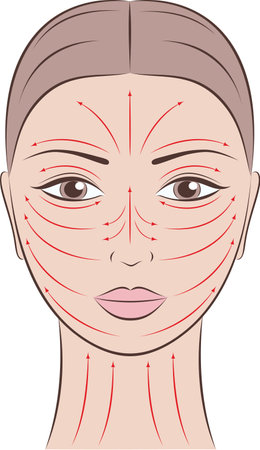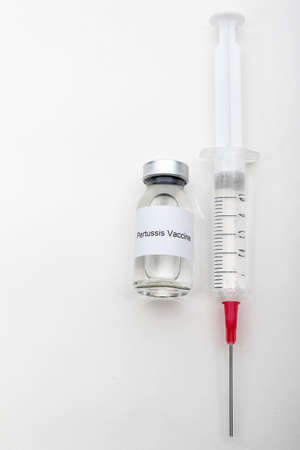Introduction to Botox
If you’re curious about smoothing out fine lines or giving your appearance a refresh, you’ve probably heard of Botox. But what exactly is it? Botox is the brand name for a purified form of botulinum toxin type A, a substance that temporarily relaxes muscles when injected in small doses. This treatment has become one of the most popular cosmetic procedures in the United States, not just for celebrities but for everyday people looking to look and feel their best. Its popularity comes from its ability to deliver quick, noticeable results with minimal downtime. Whether you’re considering Botox for the first time or just want to learn more, understanding how it works and why so many Americans choose it can help you decide if it’s right for you.
2. Is Botox Right for You?
If you’re thinking about getting Botox, it’s important to determine whether you’re a good candidate and if the treatment can address your specific concerns. Botox is most commonly used to reduce the appearance of fine lines and wrinkles, particularly on the forehead, between the eyebrows (frown lines), and around the eyes (crow’s feet). However, its uses go beyond just cosmetic enhancements. Here’s what you need to know:
Who Makes a Good Candidate?
| Ideal Candidate | Considerations |
|---|---|
| Adults aged 18–65 with mild to moderate dynamic wrinkles | Not pregnant or breastfeeding; in good general health |
| People looking for non-surgical, temporary solutions | No history of neuromuscular disorders (like ALS or myasthenia gravis) |
| Those bothered by expression lines (smile/frown lines) | No allergies to ingredients in Botox |
What Concerns Can Botox Address?
- Smoothing forehead lines, crow’s feet, and frown lines
- Softening bunny lines on the nose
- Lifting droopy brows for a more youthful look
- Reducing excessive sweating (hyperhidrosis) underarms or palms
- Treating teeth grinding (bruxism) and jaw slimming by relaxing masseter muscles
- Managing chronic migraines in some patients
Factors to Consider Before Deciding on Botox
- Your expectations: Results are subtle and temporary—typically lasting 3-4 months.
- Medical history: Be upfront with your provider about medications, allergies, or past reactions to injectables.
- Lifestyle: If you plan on being in the sun a lot or have an active schedule, discuss how this may impact results.
- Budget: Botox is usually not covered by insurance for cosmetic purposes and requires maintenance treatments.
- Provider qualifications: Always choose a licensed, experienced professional familiar with facial anatomy.
The Bottom Line
If you’re looking for a safe way to refresh your appearance without surgery and meet the criteria above, Botox could be a great option. Take time to consult with a trusted provider who can assess your individual needs and help set realistic expectations before moving forward.

3. Pre-Treatment Preparation
Before heading in for your first Botox appointment, a little prep goes a long way in ensuring the best results and the smoothest experience possible. Here are some essential do’s and don’ts to help you get ready:
What to Do Before Your Appointment
Start by scheduling a consultation with a licensed and experienced provider—this is your chance to ask questions, discuss your goals, and share any medical history or allergies. Make sure you follow any specific instructions given by your provider, as they know what works best for their practice. It’s also a good idea to arrive with a clean face, free from makeup, lotion, or sunscreen.
Helpful Tips for a Smooth Experience
- Avoid alcohol for at least 24 hours before your appointment—it can increase your risk of bruising.
- If possible, skip blood-thinning medications or supplements (like aspirin, ibuprofen, fish oil, or vitamin E) for about a week prior, but always check with your doctor before stopping any prescribed meds.
- Consider taking arnica supplements a few days ahead of time to help minimize swelling and bruising (again, confirm this with your provider).
What to Avoid Before Botox
Try not to schedule strenuous workouts on the day of your treatment, as increased blood flow may affect how the Botox settles. Avoid facials, chemical peels, or waxing right before your visit—they can irritate your skin and make the injection process less comfortable. Finally, if you’re feeling under the weather or have an active infection (like cold sores), it’s best to reschedule until you’re fully healthy.
With these pre-treatment steps in mind, you’ll be well on your way to a positive Botox experience that’s both safe and satisfying.
4. What Happens During Your Botox Session
Wondering what your first Botox appointment will actually be like? Here’s a step-by-step walkthrough of the typical clinic experience so you know exactly what to expect from the moment you arrive until your session is done.
Arrival and Check-In
When you arrive at the clinic, you’ll usually be greeted by a receptionist and asked to fill out some basic paperwork if it’s your first visit. This includes information about your medical history, allergies, and any medications you’re currently taking. Don’t forget to bring a photo ID and your insurance card if requested, though most cosmetic Botox treatments are not covered by insurance.
Consultation with Your Provider
Before any injections happen, your provider will discuss your goals and expectations. You’ll talk about which areas you want treated, how much movement you’d like to keep (if any), and review potential side effects. This is your time to ask questions—no concern is too small!
The Injection Process
BOTOX® injections are quick and relatively straightforward. Here’s what typically happens:
| Step | What to Expect |
|---|---|
| Cleansing | Your skin will be gently cleaned to remove makeup, oil, or dirt. |
| Marking | The provider may mark specific spots where the injections will go using a washable marker. |
| Injection | A fine needle is used for precise injections; most people describe the sensation as a quick pinch. |
How Long Does It Take?
The injection portion usually takes only 10–20 minutes, depending on how many areas you’re having treated. The entire visit—from check-in to walking out—often lasts around 30–40 minutes.
Is There Any Pain?
Most patients report minimal discomfort. If you’re concerned, ask your provider about numbing cream or ice packs beforehand. There might be slight redness or swelling right after, but this typically goes away within a few hours.
Overall, getting Botox is a quick, straightforward process with little downtime, making it a popular lunchtime procedure across the U.S.
5. Aftercare and Recovery Tips
Know the Dos and Don’ts After Your Treatment
After receiving your Botox injections, taking proper care of your skin is essential for achieving the best results and avoiding complications. Immediately following your appointment, it’s important to stay upright for at least four hours—no lying down or bending over, as this can prevent the product from spreading to unintended areas. Avoid touching, rubbing, or massaging the treated areas for at least 24 hours to reduce the risk of moving the Botox or causing irritation. Hold off on strenuous exercise, hot yoga, or saunas for 24 hours post-injection since increased blood flow could affect how the product settles.
Potential Side Effects
Botox is generally safe when administered by a qualified provider, but minor side effects can occur. The most common include slight redness, swelling, or bruising at injection sites—these usually fade within a few days. Some people may experience mild headaches or a feeling of tightness in the treated area, but these effects are temporary. If you notice excessive pain, significant swelling, drooping eyelids, or vision changes, contact your provider right away as these could indicate more serious complications.
How to Care for Your Skin Post-Injection
To support healing and maintain your results, use gentle skincare products and avoid harsh treatments like exfoliation or chemical peels for at least a week. Keep your skin hydrated with a good moisturizer and always apply sunscreen if you’re going outdoors, as sun exposure can worsen bruising and impact recovery. Refrain from drinking alcohol or taking blood-thinning medications (unless prescribed) around your treatment time to minimize bruising risks. Following these simple aftercare tips can help ensure you get smooth, natural-looking results while keeping your skin healthy and happy.
6. Results and Follow-Up
Once you’ve had your Botox treatment, it’s natural to be eager for results. Most people start to notice a visible smoothing of fine lines and wrinkles within three to five days after their injections, though the full effect usually develops within two weeks. Keep in mind that every individual’s response is slightly different, so don’t worry if your results take a little longer to appear.
The effects of Botox aren’t permanent. On average, the results last about three to four months. Some people may enjoy benefits for up to six months, especially after regular treatments, while others might need touch-ups a bit sooner. As the muscle activity gradually returns, you’ll see lines and wrinkles slowly reappear—this is your cue that it might be time to schedule another appointment.
Sticking with regular maintenance appointments is key if you want to keep your refreshed look consistent. Your provider can help set up a personalized schedule based on how your body responds and your aesthetic goals. Consistent upkeep not only maintains smoother skin but may also help train your muscles over time, potentially extending the longevity of each treatment. Remember, open communication with your provider is essential; always share any changes or concerns so they can adjust your treatment plan as needed.

